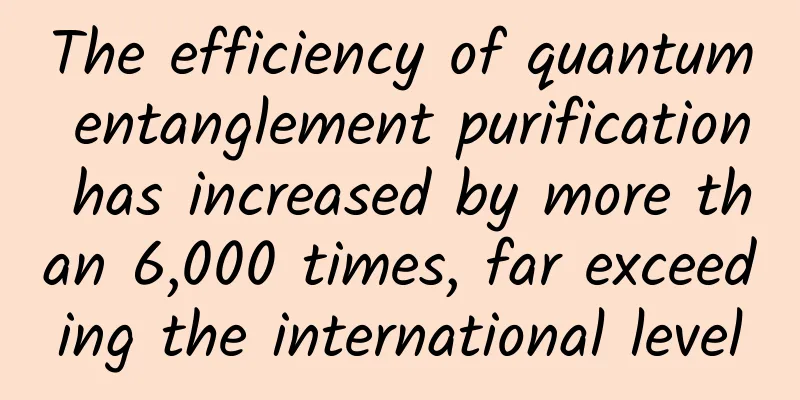When will the price of NB-IoT modules drop below 20 yuan?

|
The cost of NB-IoT, especially the module cost, has been one of the most concerned issues in commercial use since the birth of the technology. Market research by several module manufacturers shows that due to single-mode, multi-mode and shipment volume, the current price of NB-IoT modules ranges from 35 to 70 yuan, with most still concentrated at 40 to 50 yuan. This price range still has a lot of room to grow compared to the price of 2G modules below 20 yuan. However, from the perspective of the long-term development of an industry, the current cost of NB-IoT can be said to have achieved a phased effect. 1. Learning from history, the development of 2G IoT services and modules The evolution of IoT communication module costs cannot be viewed only from the perspective of the module, but needs to be examined in the context of the overall development of the industry. Overall, the development of IoT communication modules, especially 2G modules, over the past decade was first driven by demand, and then gradually transitioned to a situation where both demand and supply were jointly driven. That is, at the beginning, industry users had strong demands, which pushed operators and equipment manufacturers to meet them, and later operators, equipment manufacturers and demanders jointly promoted them. Why is this a situation? This is closely related to the background of the great development of the communications industry over the past decade. 1. The demographic dividend and traffic dividend are strong, and the Internet of Things is driven by demand In the past decade or so, mobile communications have developed rapidly, and the demographic dividend and traffic dividend have exploded successively. The entire communications industry has benefited from these two dividends and achieved rapid development. When China Mobile was established in 2000, China had very few mobile communication users. As of the end of May 2018, China Mobile had more than 900 million users. The amazing speed of starting from scratch to becoming the world's first operator was largely due to China's demographic dividend and traffic dividend. Since Chinese and global operators benefited from these two dividends, there was a strong demand for communication equipment, which indirectly led Huawei to the top spot in global communication equipment. At the same time, China's technological accumulation in the field of communications has also gone from a blank to mastering a large number of 5G core technologies, which has a lot to do with these two dividends.
Of course, both the demographic dividend and the traffic dividend are related to the services of human-to-human communication. In the context of the explosion of the two dividends, the giants in the communications industry have focused most of their resources on the needs of human-to-human communication, while the M2M needs of various industry customers for object-to-object communication are mostly met passively. In fact, along with the deployment of mobile communication networks, the demand for M2M has always existed, but because human-to-human communication has brought high profits to the entire industry, the demand for M2M is relatively insignificant, so it is not worth actively promoting. In the past decade, IoT business represented by M2M has been driven by demand. In such a seller's market, suppliers have strong bargaining power. In the early years, users still paid for a 2G module that cost hundreds of yuan. After so many years of promotion, the cost of the module has dropped to a reasonable level. 2. Spillover and marginal effects of 2G networks When the demographic dividend and traffic dividend began to saturate, the giants of the communications industry began to look for new breakthroughs. At this time, the spillover effect and marginal effect of the original human-to-human communication network began to play a role, and the giants of the communications industry also began to actively advance with users instead of passively meeting user needs. China has built the world's largest 2G network, with coverage breadth, depth and quality that are unmatched by other countries. Whether it is the vast fields and Gobi Desert in Xinjiang or Mount Everest in Tibet, there is 2G network coverage. In the past years of operation, operators have already recovered their 2G investment. When 2G users are saturated or growth is weak, access to IoT terminals allows the spillover effect of 2G networks to be fully utilized. For users, many of their own applications that need to be realized through mobile communication networks have the support of a ubiquitous network, so they are naturally willing to use it.
As early as several years ago, 2G networks have brought rich returns to operators, and the operators' investment in 2G networks has been very low. At this time, the marginal effect brought by the additional access to new IoT terminals is increasing. That is, although the charges for each 2G-based IoT terminal are not high, the marginal benefit of each new IoT terminal exceeds the marginal cost. This is of positive significance for operators to expand new revenue and user numbers in the context of user saturation. The demographic dividend and traffic dividend are beginning to saturate, and the network for human-to-human communication can also play a spillover effect to provide services for the Internet of Things and bring good marginal benefits. Operators and other suppliers are no longer passive in providing services for the demand for the Internet of Things, but are beginning to work with demanders to promote the implementation of Internet of Things projects. Driven by both supply and demand, the number of chip and module manufacturers has increased, and with the increase in demand, the cost of 2G modules has shown a significant downward trend. 3. More than ten years of marketization has resulted in ultra-low module prices Of course, in addition to the historical background of the communications industry, we should not forget the laws of market development. It takes a period of time for a new thing to be widely popularized and its cost to drop significantly. The low cost of 2G modules has been reduced to less than 20 yuan, which is the result of more than ten years of market development, not just a few years. I have come across a case before. In the early years, an engineering user used 2G modules to switch on some functions in the delivered engineering system to encourage customers to settle their debts in a timely manner. The user paid more than 500 yuan for each module. The user's willingness to pay for this proves that he has a rigid demand for it. The cost of early 2G modules was at the level of several hundred yuan, and it has gradually decreased under the joint promotion of supply and demand for many years. Many years ago, operators have also used 2G networks in the fields of electricity meter reading, car communication, financial POS machines, etc. Today, most of China Mobile's 300 million IoT connections and China Unicom's more than 80 million IoT connections are carried by 2G networks. The cost of 2G modules has dropped to less than 20 yuan, which is driven by more than ten years of commercial use and hundreds of millions of terminal shipments. 2. Long-term process, rational view of NB-IoT cost Recently, AT&T, the second largest operator in the United States, has confirmed that it will deploy a nationwide NB-IoT network in the United States and Mexico. This is another major investment in the Internet of Things after deploying eMTC networks in these two countries. It has become a fact that NB-IoT has received strong support from mainstream operators around the world. However, on the surface, the current state of NB-IoT modules is "no profit for manufacturers, and users think it is too expensive." In fact, just like the development history of 2G modules, we need to rationally view the cost of NB-IoT from a long-term development perspective. 1. Networks dedicated to the Internet of Things, but new dividends have not yet emerged As mentioned above, 2G networks are mainly used for communication between people. After years of operation, they have fully absorbed the demographic dividend, recovered their costs and achieved high returns. Using them for IoT is just the spillover effect and marginal effect of 2G networks, and relatively low-cost operations can be achieved around 2G networks. However, NB-IoT is a network dedicated to IoT, which has already invested heavily and hopes to realize cost recovery and benefits from the new dividend. I have mentioned that, unlike the traditional communications and Internet industries, LPWAN does not have a demographic dividend or a traffic dividend, but will go through three stages: terminal dividend, data dividend, and information dividend. However, because the demand side factors are not yet fully in place, the terminal dividend has not yet been opened. The lack of terminal dividends means that the large amount of initial investment costs cannot be fully amortized, so the average cost is still relatively high. 2. The shift from a supply-side driven model to one driven by both supply and demand As early as June 2016, when the NB-IoT core protocol was frozen, the author proposed that the commercial demand for NB-IoT went through three stages:
Among them, the first phase will end one year after the large-scale deployment of the network. Unlike the 2G Internet of Things, low-power wide area networks, including NB-IoT and eMTC, are actively promoted by the supply side, and some scenarios also have a certain degree of subjectivity. When the supply side is dominant and the demand side is only a passive response, the overall industry cost will not drop significantly. From the current market perspective, operators' NB-IoT networks have basically achieved large-scale deployment, and the number of application pilots in various industries is very large. The scale of some industries is that the pilot has been implemented and the effect is beginning to show, including metering, fire protection and other fields. It is possible to form millions of connections in the short term.
At this time, NB-IoT commercial use is still in the first stage, but with the effectiveness of early market education and pilot projects, some demand parties have begun to become active. The main task at present should be to strive to promote commercial use from the first stage dominated by the supply side to the second stage where both supply and demand sides work together. When the entire industry enters the second stage, the average cost will continue to decline. 3. Don’t forget the laws of the market economy; industrial development is a long-term process Just like the cost reduction of 2G, the cost of NB-IoT is also a gradual process. As an innovation in the industry, the main promoters of NB-IoT invested a lot of resources in the early stage and should get certain innovation dividends. However, its initial investment also needs a period of time and scale to amortize. Take the NB-IoT module as an example. The module originally integrates RF, baseband processing chips, algorithms, power amplifier devices, independent operating systems, etc. on a board, provides a standard communication interface, and solves complex communication problems in terminal design. The largest proportion of the module cost is the chip, and the NB-IoT chip is a new thing. The new products made by chip design manufacturers must be high-cost in the early stage because it contains a lot of fixed costs. Module manufacturers also need to invest a lot of R&D and testing costs, and also face market uncertainty risks. It can be seen that the reduction of NB-IoT costs has achieved some phased results. At present, the number of manufacturers that can form NB-IoT chip supply has greatly increased. In addition to those large chip manufacturers, small chip design teams such as Yixin Communication, Innovation Dimension, and Core Wing Information also have supply capabilities. With the increase in suppliers, chip costs have also dropped to a certain extent. Of course, just like the cost reduction process of 2G modules, the industry still needs the joint promotion of both supply and demand to achieve large-scale growth of terminals and demand, and to achieve a substantial reduction in costs after amortizing the initial investment. It took more than ten years for the 2G module to drop from 500 yuan to less than 20 yuan. It is obviously a bit hasty for NB-IoT to drop to a level that is price competitive than 2G in just two years. Let's give NB-IoT some more time. |
>>: The momentum of large-scale commercial use of NB-IoT is unstoppable
Recommend
SD-WAN & SASE market grew 30%, but what are the challenges behind it?
According to the latest "SASE & SD-WAN &...
4G is still growing, but 5G is a bit awkward. Has the promised 5G phone replacement trend come to an end?
Last week, the Ministry of Industry and Informati...
Why are there constant news about the merger between China Telecom and China Unicom? The reason is related to this matter
China Mobile is too powerful. Do China Unicom and...
my country's 5G enters a substantial acceleration phase and is ready for commercial use
It is already March 2018, and the large-scale com...
Is our 5G field booming? Many regions are actively deploying, and the future development potential is worth paying attention to
As an important direction for the evolution and u...
Summary information: HostMem/51Cloud/Qingyun Internet/TTcloud/Asia Cloud/Qimi Cloud
July is already halfway through, and the hot summ...
How does Baidu Netdisk steal your traffic?
Recently, Baidu has once again been at the center...
Shumai Technology: Hong Kong independent server from 326 yuan/month, optional CN2+BGP/Huawei premium network, 20% off for the first month
Shuhost Technology has launched a year-end promot...
What are the challenges of using multiple team collaboration apps?
Many companies are already using various team col...
Digital China is moving towards a deeper and more practical digital economy.
"Vigorously develop the digital economy, imp...
The future of TMT regulation: from telecom operator networks to OTT network effects
Luca Schiavoni, senior analyst for regulatory pol...
In the 5G era, what sparks will cloud computing and 5G create?
With the eager anticipation of the whole nation, ...
I finally figured out the service flow limit issue.
Introduction With the development of microservice...
What exactly is the “network manager” that communications people talk about every day?
[[440862]] When it comes to "network adminis...
Interrupt or poll? It's so troublesome to get a data packet!
New employees in the network department My name i...









